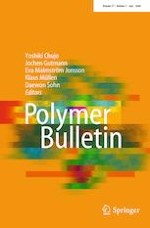09-09-2019 | Review Paper
Nanoparticle opsonization: forces involved and protection by long chain polymers
Published in: Polymer Bulletin | Issue 7/2020
Log inActivate our intelligent search to find suitable subject content or patents.
Select sections of text to find matching patents with Artificial Intelligence. powered by
Select sections of text to find additional relevant content using AI-assisted search. powered by
